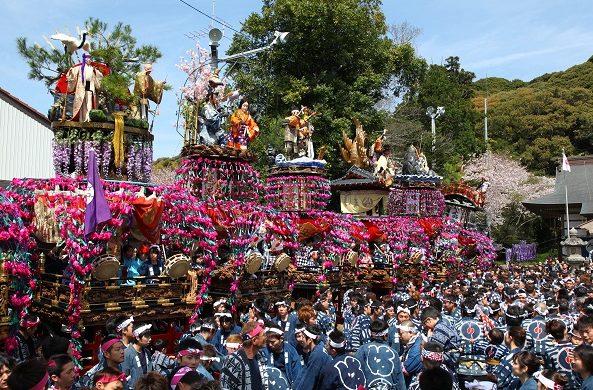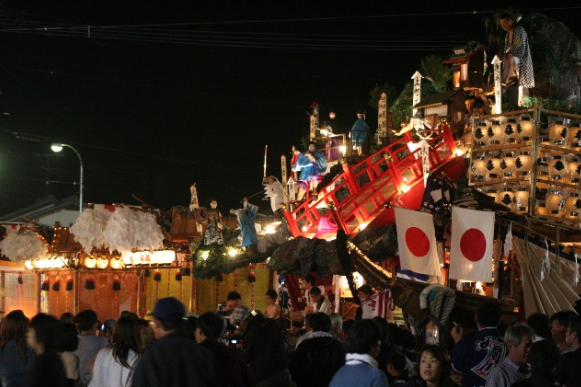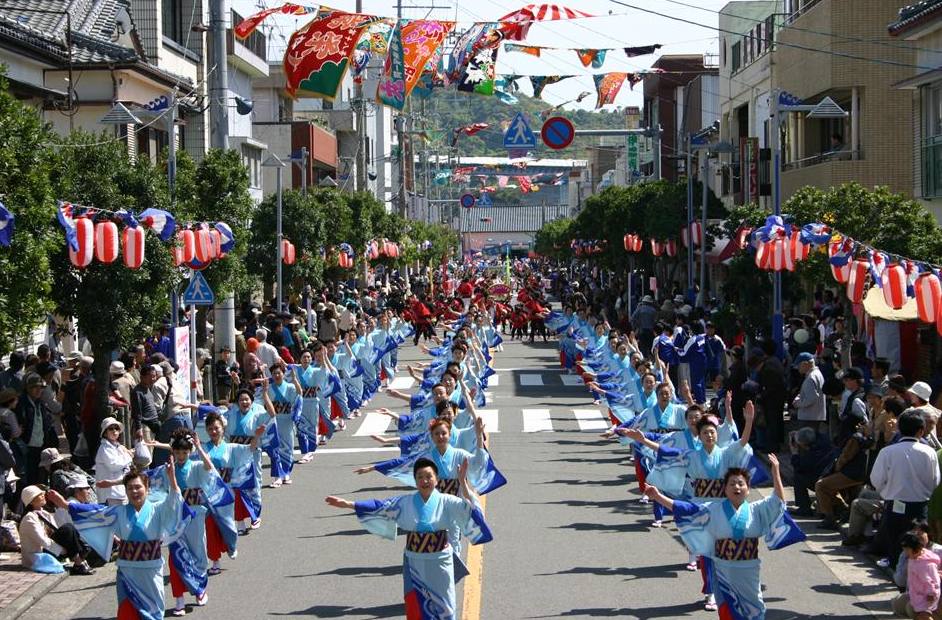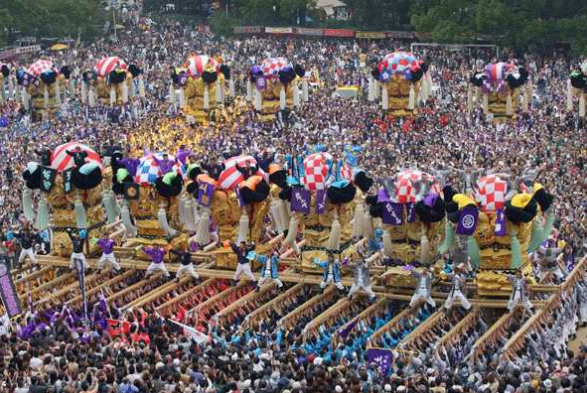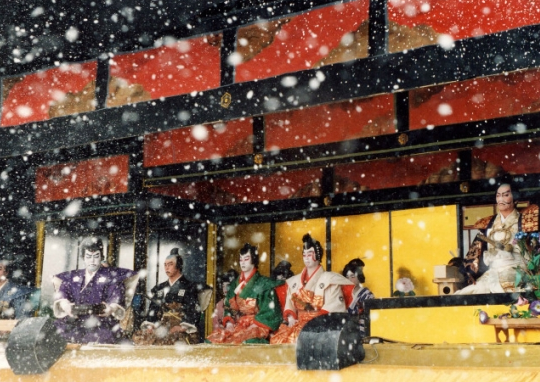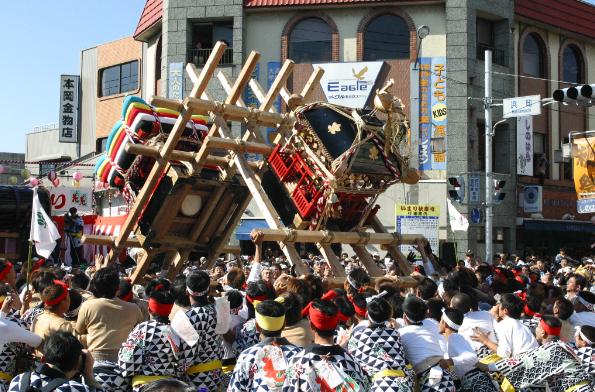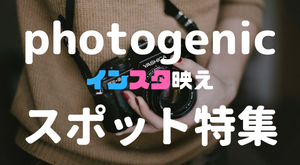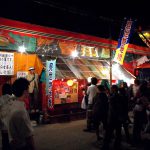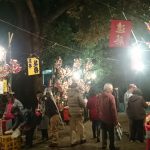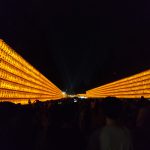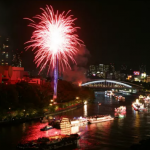Kakegawa City: The Home of Kakegawa Castle
Kakegawa City is located in the western part of Shizuoka Prefecture. The symbol of the city is Kakegawa Castle, which boasts the first wooden reconstruction of a castle keep in Japan.
The main gate of Kakegawa Castle, known as Ōtemon, is just a 5-minute walk from JR Kakegawa Station. The gate is so tall that it allows horses to pass through, making it quite impressive. The castle is also situated on a small hill, offering stunning views of the surrounding area. It’s well worth a visit.
Kakegawa City is also famous for its “Imojiru” (potato soup). Just an 8-minute walk from Kakegawa Station, you’ll find “Imojiru-dokoro Honmaru,” a specialty restaurant that offers a variety of taro-based dishes. Be sure to try it when you visit Kakegawa City.
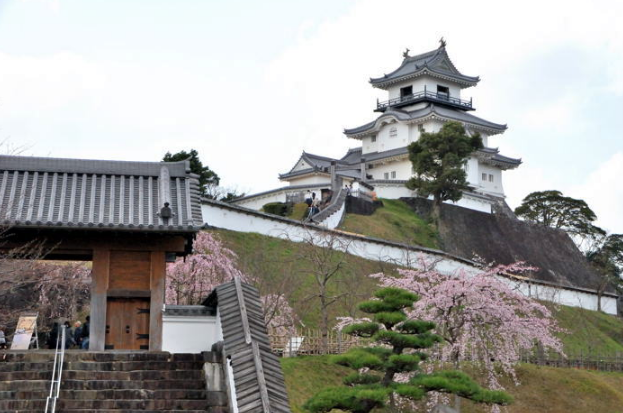
Quoted from Senkoku Photography Studio
Visit the Enshu Yokosuka Mikumano Shrine Grand Festival!
Location: Around Mikumano Shrine
Dates: Annually, on the first Friday, Saturday, and Sunday of April
Access:
- From JR Fukuroi Station, take a Shizutetsu bus towards Yokosuka for 20 minutes, get off at “Shinyokosuka” bus stop.
- 25 minutes by car from Tomei Kakegawa IC
http://www.city.kakegawa.shizuoka.jp/kankou/event/mikumanomatsuri/ (Official Website of Kakegawa City)
The Enshu Yokosuka Mikumano Shrine Grand Festival is the premier festival in the Enshu region. During the festival, 13 decorated floats called “Neri” are paraded energetically through the town to the sound of luxurious festival music.
Although usually a quiet town, during the festival period, the entire town is enveloped in the festive atmosphere and greatly livens up.
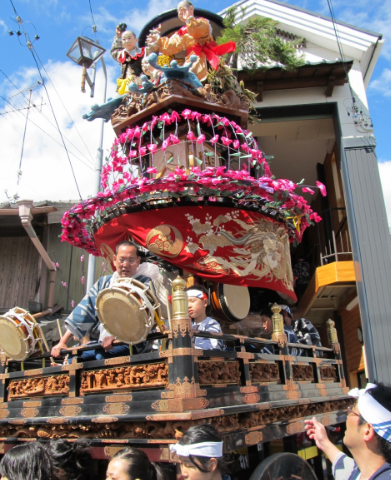
Quoted from 4travel
A Festival with Approximately 280 Years of Tradition
This festival boasts a tradition of approximately 280 years. It is said that in the Kyōhō era (around 1720), Tadanobu Nishio, the 14th lord of Yokosuka Castle and a senior official in the Edo government, brought the Tenka Festivals of Edo (the Kanda and Sanno Festivals) to Yokosuka, shaping the festival into its current form. It is also noted that as early as the Genroku era (around 1690), there existed a festival centered around dancing.
The Grand Parade of the Neri
The Neri serve as escorts for the portable shrines and are approximately 6 meters long, lavishly decorated, and some have a touch of spring-like charm. The Neri are energetically pulled through the town accompanied by the shouts of “Shita! Shita!”
The Neri are supported by a single pillar, a style known as “Ippon-bashira Mando-gata.” This type of float is depicted in the “Kanda Myojin Festival Picture Scroll,” which meticulously illustrates the Tenka Festivals of mid-Edo. However, these floats have since disappeared from their place of origin in Tokyo and now only remain in Yokosuka and nearby areas.
Additionally, the festival music played on top of the Neri is called Sansha Sairei Hayashi. Performers, known as “Tekkomai,” accompany the music wearing masks such as Okame and Hyottoko. Recognized for its ancient history and unique melody, the Sansha Sairei Hayashi was designated as Shizuoka Prefecture’s first intangible cultural property in 1955.

Quoted from 4travel
A Town Transformed by the Festival
This is a traditional festival that unites the entire town. Additionally, Mikumano Shrine is known for its blessings of childbearing, safe childbirth, and matchmaking, and a ceremony for child blessings is also held during the festival. Be sure to visit the shrine and experience the festivities.
※ The featured image is quoted from the official website of Kakegawa City.
(Edited by 千八之)


